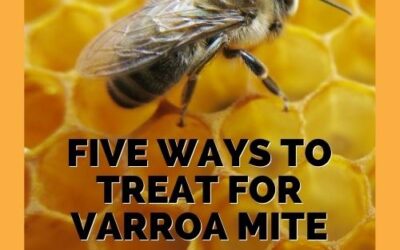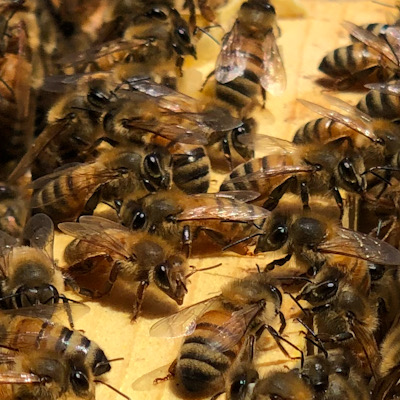
TYPES OF HONEY BEES IN A COLONY
A Little Bit of Bee Biology
In a honey bee colony, there are three types of bees. The female worker, the female queen, and the male. Male bees are typically referred to as drones.
The two different types of females is an example of a caste, which is a functionally different form of the same sex.
The three types of bees are very similar in their body shape. Bees are members of Class Insecta which means their bodies are made up of three major regions. The head, thorax, and abdomen.
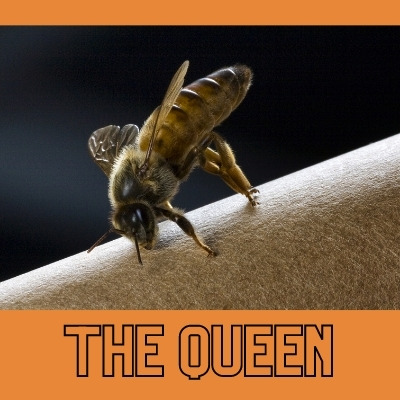
THE QUEEN BEE
The queen honey bee plays an incredibly important role in the hive. She is the largest of the bees in a colony, and she is the only female with fully developed ovaries.
In most cases there is just one queen, though sometimes there is more than one or none, depending on the circumstances.
Queen honey bees have two primary purposes. The first is to produce pheromones (chemical scents) that help regulate the unity of the colony. The second is to lay eggs. Lots and lots of eggs!
In just one day a strong queen bee can lay up to 2,000 eggs. Laying each egg takes just a few seconds and queens stay busy. It’s her job to keep the colony thriving. No pressure!😂
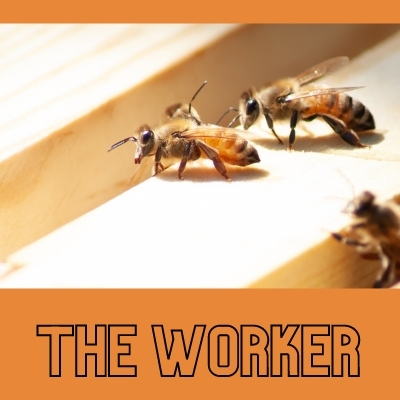
THE FEMALE WORKER BEE
It’s no surprise that a worker bee does most of the work. Aptly named, right?!
What’s interesting is that worker bees take on different tasks in their lifetime and it depends on where they are in their lifecycle.
Young worker bees’ first role is that of a nurse bee. The priority is to look after the larvae. Those tasks include preparing cells for brood and feeding the larvae with a mix of pollen and honey.
The next phase for worker bees involves repairing wax comb and cleaning debris from hive. Some worker bees might also fill guard duty roles at the hive entrance.
Finally, the worker bee will be a forager for the hive. During this cycle, the bees will forage for pollen, nectar, and water. Worker bees will also gather plant and tree resins which are used to make propolis (bee glue).
Foraging is the final phase of a worker bees life. Bees usually die in the field during foraging duties. The length of time that they spend foraging will depend on the amount of energy they spend. The closer the resources are for the hive, the longer the bees can last, as they will spend less energy foraging.
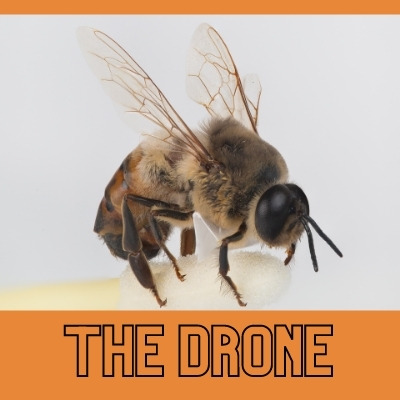
THE MALE DRONE BEE
A drone is a male honey bee. The drone honey bee’s primary role is to mate with an unfertilized queen. Reproduction is the name of the game for drones.
Male drones are bigger than female workers and have larger compound eyes and muscular wings Unlike female worker bees, drones don’t gather pollen or nectar and they do not have stingers.
If a queen needs replacing, the drones are eager and willing to do their duty, but drones are lazy! Basically they sit around the hive waiting to fertilize a queen. Even still, it is believed that the presence of drones in the hive is calming and reassuring to the rest of the colony.
While they are needed for survival, they don’t contribute much else to the hive, so come wintertime, the worker bees kick them out for the overall good of the hive.
A drone bee’s life is short but sweet. They typically live around 3 months, but again, if food storage becomes low they’ll get kicked out. This is common when preparing for winter. Sadly, drones don’t know how to forage and end up dying of starvation.
THE THREE BEES
There you have it! A quick overview of the three types of honey bees in a colony. Each type has such a specific role and they all fuction together to keep the colony alive. Honey bees are simply fascinating!
Stay tuned for more posts about bees and beekeeping!



